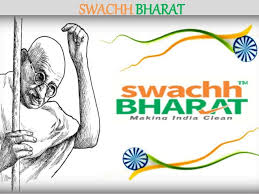 By Nageshwar Patnaik in Bhubaneswar, March 13, 2022: The new narrative for electoral victory in 2022 has become development and good governance. The focus of voters is now more on the comparative performance and the economy has become an undisputable way to indicate growth and success. The electorate now feels a direct connect to something tangible, not his or her caste or religion.
By Nageshwar Patnaik in Bhubaneswar, March 13, 2022: The new narrative for electoral victory in 2022 has become development and good governance. The focus of voters is now more on the comparative performance and the economy has become an undisputable way to indicate growth and success. The electorate now feels a direct connect to something tangible, not his or her caste or religion.
The 2022 elections to assemblies of five states, Goal, Manipur, Punjab, Uttarakhand an Uttar Pradesh have given a new dimension to the phrase, good governance and economics is good politics, but via social empowerment. The impressive win of the BJP in UP and other states proves this and beyond.
The BJP managed to beat the incumbency factor to stay in power in all the four states where it had governments – UP, Uttarakhand, Goa and Manipur. However, overall, the saffron party won fewer seats in the five states where elections were held in 2022 compared to 2017 though it increased its vote share in all states, except Uttarakhand though the party had 406 MLAs from these states in 2017, compared to 357 in 2022. The biggest erosion of legislators is in UP, where the BJP won 57 fewer seats than last time. Overall, it lost 82 seats where it was in power, but also wrested 23 from other parties.
Good governance and development accompanied by the larger than life size of prime minister, Narendra Modi for his successful diplomacy in international arena have gone a long way in favour of the saffron party to bounce back and decimate the fractured opposition. Incidentally, Good Governance Day (Suśāsan Divas) was established in 2014, being observed annually on 25-December, the birth anniversary of former Prime Minister Atal Bihari Vajpayee, with a view towards fostering awareness of accountability in government.
Putting the citizen first is the guiding principle of good governance that brings stakeholders, the government and the citizens closer to each other. Good governance is the key to a country’s prosperity and progress. For this to happen, it is important that the citizens become active participants in governance. Swachha Bharat is a textbook example.
 The redressal of public grievances assures the citizens that their vote has not gone wasted. Technology is an important tool for good governance as it ensures transparency and accountability which result in the betterment and welfare of all citizens. It also leads to the simplification of processes. The best example is the self-certification of startups introduced by the Narendra Modi government, exhibiting trust in their citizens. Digital India ensures that government services are available to the citizen with little human interference.
The redressal of public grievances assures the citizens that their vote has not gone wasted. Technology is an important tool for good governance as it ensures transparency and accountability which result in the betterment and welfare of all citizens. It also leads to the simplification of processes. The best example is the self-certification of startups introduced by the Narendra Modi government, exhibiting trust in their citizens. Digital India ensures that government services are available to the citizen with little human interference.
These features of good governance were the hallmark of the Modi-led National Democratic Alliance-I government. Social empowerment, which came through good economics, is now good politics. Voters choose a stable government with a strong, decisive leadership. Now, development has become the buzzword. With the coming of age of social media, people can make more informed choices in many areas. Understanding this, Modi has mastered the skill of optimising social media as a tool to connect with the people.
The results in UP particularly are a spectacular win for the BJP, which seem to have not only consolidated its power base but also stamped its ideological hegemony over Indian politics. It sends a plain and simple message: Politics, in the end, is a game of competitive credibility and the BJP simply has no competition.
In UP, Yogi Adityanath will become the first chief minister in over 37 years to be re-elected by the state. Certainly Yogi’s new welfarism, or crackdown on certain kinds of corrupt intermediaries may contribute to the BJP’s popularity. But the idea that all of that was enough to wipe out the effects of the Covid-19 devastation, unprecedented inflation, a dip in consumer spending and a real jobs crisis requires more explanation. Perhaps the angriest and the most devastated no longer feel politics is the conduit for solving their problems. However, Yogi Adityanath seems to have done a good job in the backdrop of a pandemic which brought the world to a halt.
 Secondly, Yogi Adityanath is often castigated for his comments on women saying they can’t be ‘independent’, but deeds speak louder than words. According to National Crime Records Bureau (NCRB) data for 2020, the state reported 2,709 rape cases, 43% compared to 2016. Attempt to rape cases fell by 87%, acid attacks halved, and cases of kidnapping declined by 22.7%.
Secondly, Yogi Adityanath is often castigated for his comments on women saying they can’t be ‘independent’, but deeds speak louder than words. According to National Crime Records Bureau (NCRB) data for 2020, the state reported 2,709 rape cases, 43% compared to 2016. Attempt to rape cases fell by 87%, acid attacks halved, and cases of kidnapping declined by 22.7%.
The Yogi and Modi combine had implemented various government welfare schemes; termed labharti varg (welfare beneficiaries) These include beneficiaries of the Pradhan Mantri Awas Yojana, Swacch Bharat Abhiyan, PM-KISAN scheme and Ujjwala Yojana.
A state once known for bad roads, negligible electricity, the lack of doctors and teachers, farmers burdened with loans, and poor law and order, has turned around by adopting good economics with good politics. Within a year, the Adityanath government had received proposals worth ₹4.68 lakh crore. Uttar Pradesh has slowly but steadily emerged as the favourite stop for investors in India.
Politics undoubtedly is a game of competitive credibility and the BJP simply has no competition. Added to it the opposition was more of a crowd and less of a group, which reflects in the results. Congress leaders acknowledged that opposition votes were split among the anti-BJP parties including the Aam Aadmi Party, Trinamool Congress, Samajbadi Party, Bahujan Samajbadi Party and independents ion the states where elections were held.
The BJP has virtually won the much touted Semi-final 4-1 with AAP exceptionally doing well in Punjab with a landslide victory. But the message is loud and clear that in the coming 2024 general election, the opposition needs to regroup and unitedly fight in the battle of ballots if it is really serious of dethroning Modi for third term in the centre.


Leave a Reply
Be the First to Comment!